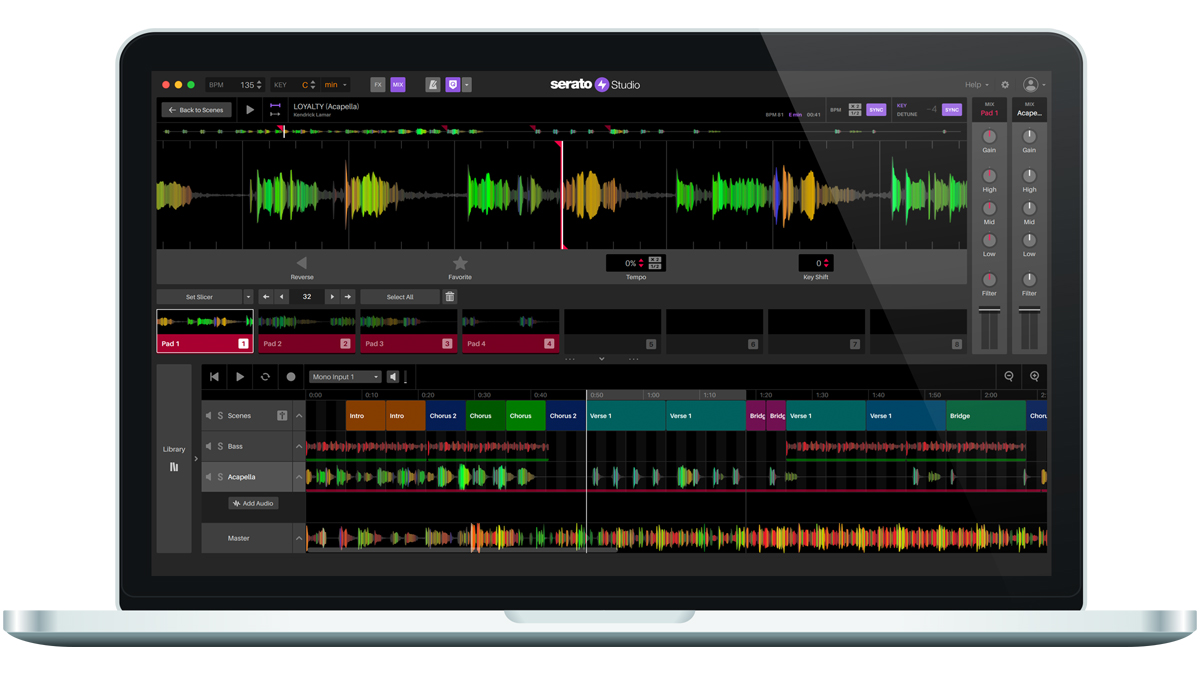Serato Studio can now record audio, so does that mean it’s now a ‘proper’ DAW?
Beginner- and DJ-friendly music-making software updated to version 1.6
Believe it or not, up until now, Serato Studio - the beginner/DJ-friendly DAW - has been missing one very important feature: the ability to record audio. However, thanks to the v1.6 update, which has been released today, this is now in place.
The theory is that the recording functionality has been added without compromising Serato Studio’s simple workflow, which has always been one of the software’s key selling points. You can now capture vocals, instruments and samples, expanding your creative horizons significantly.
There are other improvements here, too: the ability to drag-and-drop audio clips into other tracks; three additional FX slots for the Audio Track (bringing the total to six); and a new Virtual Audio Driver that enables you to livestream Serato Studio’s output to another application. Smaller improvements and bug fixes have also been made.

“Serato Studio now opens up music production to vocalists who want to rap or sing and then put a professional-level beat behind it,” says Serato’s Chief Strategy Officer Nick Maclaren.
“With many DAWs there are technical barriers stopping vocalists from being able to make a simple loop but with Serato Studio you can record and make a beat within a few mouse clicks. It’s the workflow in 1.6 that makes recording unique, and helps vocalists and producers to get ideas down fast, which is often difficult in music production.”
Find out more on the Serato website. You can buy Serato Studio outright for $199, or subscribe for $9.99 a month.
Want all the hottest music and gear news, reviews, deals, features and more, direct to your inbox? Sign up here.



I’m the Deputy Editor of MusicRadar, having worked on the site since its launch in 2007. I previously spent eight years working on our sister magazine, Computer Music. I’ve been playing the piano, gigging in bands and failing to finish tracks at home for more than 30 years, 24 of which I’ve also spent writing about music and the ever-changing technology used to make it.
